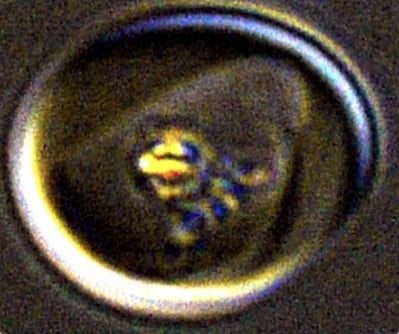BREAKING NEWS: Scientists have unveiled a groundbreaking discovery about the deadly Plasmodium falciparum malaria parasite: its iron crystals spin wildly, powered by the same chemical reaction that launches rockets. This urgent finding could reshape our approach to malaria treatments and nanotechnology.
New research from University of Utah reveals that these microscopic iron crystals, present in every cell of the malaria-causing parasite, are propelled by the breakdown of hydrogen peroxide. This reaction not only keeps the crystals in perpetual motion but may also play a crucial role in the parasite’s survival, potentially leading to better antimalarial drugs.
For decades, the reason behind the erratic motion of these iron crystals has puzzled scientists. “The motion of these crystals is so mysterious and bizarre, it’s been a blind spot for parasitology for decades,” stated Paul Sigala, PhD, lead researcher and associate professor of biochemistry at the Spencer Fox Eccles School of Medicine.
The research, published in PNAS, highlights how the iron-based compound heme, found in the parasite, triggers the decomposition of hydrogen peroxide into water and oxygen, releasing energy similar to that used in aerospace engineering. “This hydrogen peroxide decomposition has been used to power large-scale rockets,” explained Erica Hastings, PhD, a postdoctoral fellow involved in the study.
With hydrogen peroxide being a waste product of the parasite, this research presents a novel understanding of how these crystals operate. The team discovered that even in isolation, hydrogen peroxide can initiate the spinning of purified crystals, showcasing a unique biological propulsion system previously unseen.
The implications of these findings are immense. The frenetic motion of the crystals may help the parasite to “burn off” excess toxic peroxide, which is detrimental to cellular health. Moreover, it could assist in managing excess heme, allowing the malaria parasite to optimize its survival strategies.
This discovery not only opens the door for developing new antimalarial treatments but also paves the way for innovative nanotechnology applications. The researchers believe that nano-engineered self-propelling particles could revolutionize drug delivery systems and industrial applications.
“This unique self-propelled metallic nanoparticle phenomenon could inspire better designs for microscopic robots,” said Sigala. “If we can block the chemistry at the crystal surface, it might be sufficient to kill the parasites, targeting a mechanism that is quite different from human biology, minimizing side effects.”
Currently, malaria remains a significant global health threat, particularly in regions where it is endemic. The potential to harness this newfound understanding of the malaria parasite could lead to significant advancements in both medical treatments and technological innovations.
The next steps involve further exploration of how these findings can translate into viable treatment options. As researchers continue to delve deeper into the mechanics of these spinning crystals, the hope is that new, effective antimalarial drugs will emerge, potentially saving countless lives.
With malaria affecting millions worldwide, this urgent breakthrough shines a light on the path forward in combating this deadly disease. Stay tuned for more updates on this developing story as scientists continue to explore the implications of their findings.
For more details, the full study is available in the latest issue of PNAS. This research was supported by the National Institutes of Health under several grant numbers, including R35GM133764 and U54DK110858.






